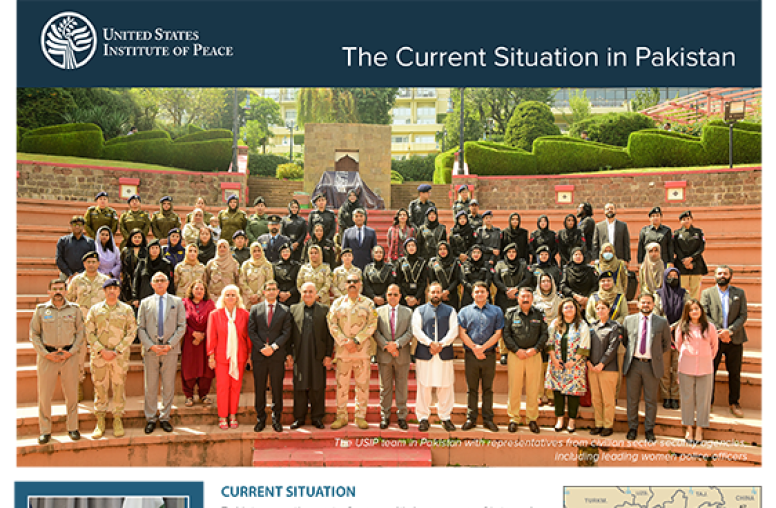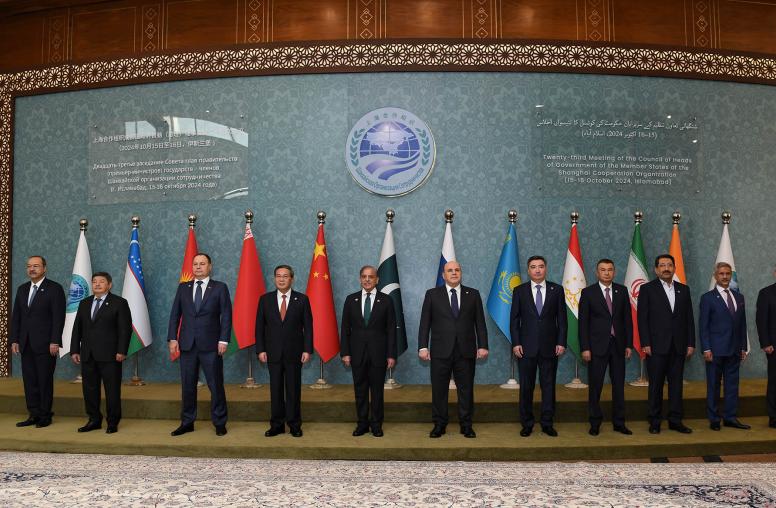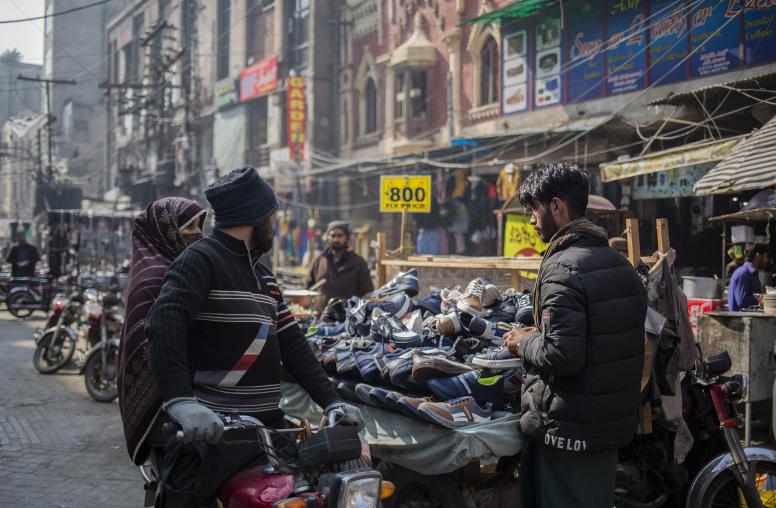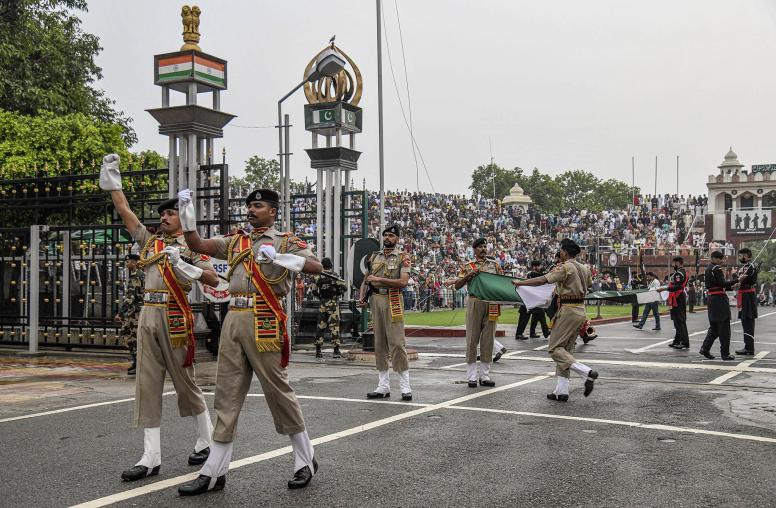China’s Kashmir Policies and Crisis Management in South Asia
China’s policy on the Kashmir conflict between India and Pakistan has a significant impact on regional stabilization and crisis management efforts in South Asia. Beijing also plays an important third-party role in helping deescalate hostilities between the two countries. This brief discusses the evolution of China’s Kashmir policies over the past several decades and examines Chinese cooperation with the United States during periods of crises between the South Asian rivals.
Summary
- Since the 1980s, China’s policy on Kashmir has shifted from a strong pro-Pakistani stance to a more balanced one between Pakistan and India.
- Chinese diplomatic support for internationalizing the Kashmir issue in the United Nations has diminished over time, though Beijing also has blocked UN action against Pakistan-linked terror groups.
- During crises, Chinese concerns about preventing war between India and Pakistan outweighed political considerations to defend Pakistan, and Beijing worked closely with Washington to mitigate regional tensions.
China’s Evolving Approach to Kashmir
China’s policies on the Kashmir conflict between India and Pakistan affect regional stabilization and crisis management efforts in South Asia. Following the September 2016 terrorist attack that killed nineteen Indian troops in India-administered Kashmir, China raised concerns about rising tensions in Kashmir and reiterated its calls for a peaceful resolution of the Kashmir dispute through dialogue and consultation.1 In recent decades, China has played an important third-party role in helping to deescalate tensions between its nuclear-armed neighbors India and Pakistan, in stark contrast to its more belligerent foreign policy in the 1960s.
In the early decades of the Cold War, China’s policies in South Asia were driven by security threats from India and New Delhi’s alignment with China’s main rival the Soviet Union. China entered an anti-India military alliance with Pakistan after the Sino-Indian border war of 1962 and became a vocal supporter of Pakistani claims on Kashmir, ending the neutrality it had maintained in the 1950s. Its acquisition of land in the disputed region in a 1963 border agreement with Pakistan made it a third party to the dispute, further complicating its ability to remain impartial, given that Article 6 of the agreement states that the land could be renegotiated after the Kashmir issue was settled.2 In 1964, Beijing reaffirmed Pakistan’s position that the dispute should be resolved in accordance with the wishes of the Kashmiri people.3 It then went so far as to help craft the Pakistani military strategy and provide deterrent support against India in the 1965 war over Kashmir.4 During this period, Chinese foreign policies were confrontational, ideologically driven, and supportive of global nationalist and self-determination movements.
Chinese leader Deng Xiaoping, who reoriented his country’s priorities toward economic modernization and stable relations with neighbors, charted China’s current course toward greater evenhandedness on the Kashmir issue. Deng’s efforts to normalize relations with India gradually removed Chinese interference on Pakistan’s behalf. In 1980, Deng said that the Kashmir dispute was a bilateral issue to be resolved peacefully by the two countries.5 Beijing’s focus on dialogue and negotiations as the only way to resolve global conflicts has become a major tenet of its contemporary foreign policy.
More recently, China has sought to advance new investments in Pakistan yet to avoid major tensions with India that could threaten its growing economic ties. Sino-Indian trade reached $71.6 billion in 2015, far outpacing China-Pakistan trade, which was valued at $19 billion the same year.6 Chinese investments in India totaled $956 million between May 2014 and 2016, and President Xi Jinping has pledged to increase investments to $20 billion by 2019.7 However, Beijing’s plans to invest $46 billion in the China-Pakistan Economic Corridor (CPEC) over the next fifteen years could create a new equilibrium in its economic relations with both countries. Given the importance of CPEC’s success to Xi’s Belt and Road Initiative, Beijing has largely brushed off Indian protests against Chinese investments in Gilgit-Baltistan in Pakistan-administered Kashmir.8 CPEC has not altered China’s formal position on Kashmir but has increased its interests in regional stability to protect Chinese economic interests.
Mixed Signals in the UN
Chinese support for Pakistan’s efforts to internationalize the Kashmir issue has declined over the past few decades. After Beijing replaced Taipei as China’s legal representative at the United Nations (UN) in 1971, the Chinese government repaid Pakistan, which had previously advocated on behalf of Beijing’s admission to the UN, by raising the Kashmir issue with a potential UN role and casting its first veto against Bangladesh’s admission to the international body. In a shift from its earlier advocacy, and in response to Indian lobbying efforts, Beijing advised Islamabad in the 1990s against convening a special UN session on Kashmir. Moreover, China has not endorsed Pakistan’s numerous calls on the UN to demilitarize Jammu and Kashmir and implement decades-old resolutions. At the same time, Chinese officials have privately conveyed sympathy for Pakistan’s position on Kashmir.9
However, China’s protection of Pakistan-based militant groups that have launched terrorist attacks in India from international criticism and punitive actions undermines its claims of neutrality. It has blocked action in the UN sanctions committee over Pakistan’s release of Mumbai attack mastermind Zaki-ur Rehman Lakhvi and extended its technical hold on a ban on Jaish-e-Mohammad chief Masood Azhar for his involvement in the Pathankot attack on an Indian air force station. China also prevented India from naming Jaish-e-Mohammad and Lashkar-e-Taiba in the BRICS (Brazil, Russia, India, China and South Africa) declaration of October 2016 that condemned terrorism in all its forms. Over the years, China has refused to support the Indian proposal to issue a joint declaration against terrorism, which Beijing views as an Indian strategic design to internationally isolate Pakistan, a Chinese government scholar revealed in a Beijing interview.
Crisis Management
Despite its strong ties with Pakistan, China has prioritized preventing war over protecting Pakistani interests during various crises. After Pakistani soldiers and Kashmiri militants seized Indian positions in Kargil, triggering a war with India in 1999, China urged Pakistan and India to “respect the Line of Control (LOC) and resume negotiations at an early date in accordance with the spirit of the Lahore declaration,” indicating its preference to maintain the status quo along the LOC that separates Pakistani and Indian Kashmir.10 Notwithstanding the Indian preference for noninterference, an Indian official said in an October 2016 interview that China’s influence on Pakistan in preventing further escalation in the Kargil conflict was “helpful.”
China also joined international efforts to prevent a near-war scenario that brought a million troops and Indian nuclear-capable missiles to the border following a Pakistani militant attack on the Indian Parliament in 2001. China helped the United States and Russia coordinate mediation between Indian Prime Minister Atal Bihari Vajpayee and Pakistani President Pervez Musharraf. Vajpayee revealed in an interview that “the Chinese did not play an important role but advised both countries to settle all issues in a peaceful manner.”11 Beijing dispatched Premier Zhu Rongji to India, participating in the U.S. strategy of sending foreign leaders to both countries to deter them from war.
Chinese officials also engaged in unprecedented shuttle diplomacy after the 2008 Mumbai attacks brought India and Pakistan once again to the brink of war. Chinese Vice Foreign Minister He Yafei served as a special envoy shuttling between New Delhi and Islamabad and urged dialogue in a bid to deescalate hostilities after Pakistani terrorists coordinated multiple attacks across Mumbai. India appealed to China to press Pakistan to bring the accused militants to justice. Beijing privately urged Islamabad to arrest and prosecute the militants, which Pakistan did, albeit briefly.12
In 2016, regional tensions reached new heights after a September 18 terrorist attack in Uri in India-administered Jammu and Kashmir. The attack was preceded by the July killing of Hizbul mujahideen commander Burhan Wani by the Indian army, which led to civilian protests and confrontations with Indian police. The Chinese Foreign Ministry said it was “concerned about the casualties in the clash, and hope that relevant incident will be handled properly.”13 The Kashmir situation continues to deteriorate as Indian and Pakistani soldiers exchange deadly fire across the LOC on a regular basis.
China has the potential to play a greater role in stabilizing the region, but thus far has been relegated to occasional crisis manager and has not proactively called for resolution of Kashmir. Although Beijing prefers that a war not break out, it also benefits from some level of Indo-Pakistani tension, which splits India’s strategic attention on China. Moreover, according to an Indian official interviewed in October 2016, India prefers bilateral settlement of the Kashmir issue that allows no room for external mediation, particularly by the Chinese. Given the current trajectory of cross-border infiltrations in Kashmir that will lead to increased flare-ups in the region, China may need to rethink its periodic and limited role.
Policy Recommendations
The United States and China need to move beyond their traditional crisis management roles to cooperate on crisis prevention. China’s relations with Pakistan have deepened, particularly with CPEC, and Beijing has greater influence over Islamabad’s policies than Washington does. The United States should regularly underscore the urgency of the Kashmir situation to Chinese counterparts at the highest levels and make a forceful argument that a South Asian war would directly threaten China. At the same time, Washington would do well to not underestimate the utility of sustained diplomatic engagement and pressure, information-sharing, and Chinese learning over time, as demonstrated by the Obama administration’s successful efforts to gain Chinese backing for its agenda on Iran’s nuclear program. Washington needs to convince Beijing to urge Pakistan to take good-faith measures addressing India’s concerns on cross-border terrorism, which is a key trigger of military escalation. Beijing could in turn prod Islamabad to prosecute terrorists involved in attacks on India as a first step. Meanwhile, the Indian government should abandon its current policy of seeking to internationally isolate Pakistan. These moves by both countries could create an opening for resuming talks and politically settling the Kashmir issue.
Notes
- “Foreign Ministry Spokesperson Lu Kang’s Regular Press Conference on September 19, 2016,” PRC Ministry of Foreign Affairs, September 19, 2016, www.fmprc.gov.cn/mfa_eng/xwfw_665399/s2510_665401/2511_665403/t1398638.shtml.
- “The Boundary Agreement between China and Pakistan, 1963,” http://people.unica.it/annamariabaldussi/files/2015/04/China-Pakistan-1963.pdf.
- “Zhongguo He Bajisitan Lianhe Gongbao” (“China and Pakistan Joint Communique”), Zhonghua Renmin Gongheguo Guowuyuan Gongbao (People’s Republic of China State Council Communiques) 29, no. 3, March 12, 1964, www.gov.cn/gongbao/shuju/1964/gwyb196405.pdf.
- John W. Garver, Protracted Contest: Sino-Indian Rivalry in the Twentieth Century (Seattle: University of Washington Press, 2001), 195–99.
- John W. Garver, “China’s Kashmir Policies,” India Review 3, no. 1 (2004): 2, 4.
- “11-6 Value of Imports and Exports by Country (Region) of Origin/Destination,” China Statistical Yearbook 2016 (Beijing: China Statistics Press, 2016), www.stats.gov.cn/tjsj/ndsj/2015/indexeh.htm.
- Ruchika Chitravanshi, “China Leaps 10 Spots with $956 million FDI in India,” The Economic Times, June 25, 2016, http://economictimes.indiatimes.com/industry/banking/finance/china-leaps-10-spots-with-956-million-fdi-in-india/articleshow/52909753.cms.
- “Foreign Ministry Spokesperson Hua Chunying’s Regular Press Conference on August 31, 2016,” PRC Ministry of Foreign Affairs, August 31, 2016, www.fmprc.gov.cn/mfa_eng/xwfw_665399/s2510_665401/t1393461.shtml.
- Amjad Mahmood, “China to Support Pakistan against Foreign Aggression,” Dawn, September 24, 2016, www.dawn.com/news/1285774; “China Stands with Pakistan on Kashmir Issue: Li Keqiang to Nawaz Sharif,” Firstpost, September 21, 2016, www.firstpost.com/world/china-stands-with-pakistan-on-kashmir-issue-li-keqiang-to-nawaz-sharif-3014342.html.
- “Respect LOC, Says China,” The Tribune, July 7, 1999, www.tribuneindia.com/1999/99jul07/world.htm#5.
- “Vajpayee: Keep Your Promise,” Washington Post, June 23, 2002.
- Polly Nayak and Michael Krepon, The Unfinished Crisis: US Crisis Management after the 2008 Mumbai Attacks (Washington, DC: Henry L. Stimson Center, February 2012), 46.
- “Foreign Ministry Spokesperson Lu Kang’s Remarks,” PRC Ministry of Foreign Affairs, July 18, 2016, www.fmprc.gov.cn/mfa_eng/xwfw_665399/s2510_665401/t1382407.shtml.



